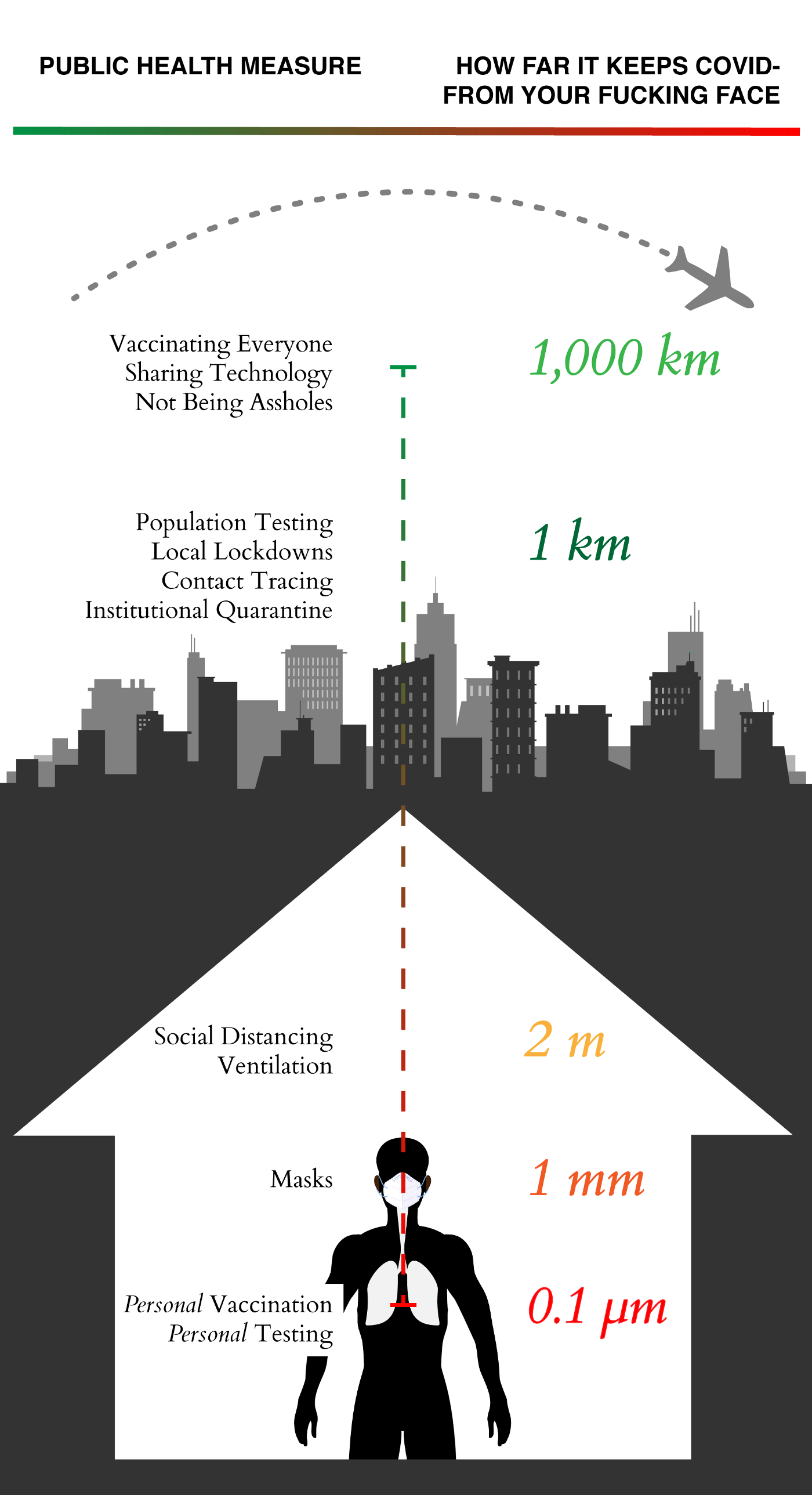How Cognitive Science Helps Me Write

I studied Cognitive Science and people ask if I use my education. Yeah, every day. It really helps me write.
Writing is the ignition of cognition. It’s having a thought in your brain and getting it to spark in someone else’s. Obviously a lot is lost in transmission, so understanding how cognition works is very helpful, even just a few rules of thumb.
So this is the remix of cognition*, hot and fresh out the kitchen.
These are three concepts I vaguely remember from Cognitive Science that I use in writing every day.
1. Spreading Activation
One core idea that Cognitive Science disabuses you of is that the brain is like a computer. In truth, the brain is like the whole Internet.
Your brain is, very roughly, a collection of neurons, each exciting (or depressing) each other. It’s closer to a bunch of social media accounts egging each other on than it is to one lonely computer.
Your brain is electricity, and for an idea to spread in your brain it has to literally fire from neuron to neuron. So an idea has to find and spread through networks you already have, it can’t just come out of nowhere. It has to spread through language you know, culture you understand, emotions you have, even sexual desires or hatred deep in your heart. Every idea is an activation and your brain is the network across which it spreads.
For an example, behold Kim Kardashian’s butt:

Kim Kardashian—the Madame X of her day—‘broke’ the Internet in winter 2014 with this photograph. It spread from website to social media account and back and forth and round and round again. It went, as they say, viral.
Somewhat elegantly, this is how the idea of Kim Kardashian spreads inside your brain as well. It spreads from neuron to neuron, spreading the activation that we experience as a thought. You could say that thoughts need to go ‘viral’ inside your brain as well.
Neurologically this is quite complicated. The thought of Kim K does not mean your brain is more activated than thinking about the wall, it’s just different. Within cognitive psychology, however, spreading activation is treated as a useful abstraction of the brain, one which we can model with computers, and which indeed forms the backbone of modern AI.
The experience here is much like Proust’s famous madeline. For Proust, biting into a madeline (a cookie?) activated a certain part of his brain, which activated another part, which suddenly brought memories of his childhood rushing in.

In the same way, in Ratatouille the critic takes a bite of the eponymouse dish and is immediately transported back to his childhood. What the movie shows is the experience of spreading activation in his brain.
To return, then, to writing, the goal is not to construct some logical argument which gets logically deconstructed in someone else’s brain. This is fine for technical writing where the reader is motivated, but not for the skittering hive mind of the Internet. The goal here is to find something familiar, something emotional, and then hang onto it for dear life, trying to get a toehold in someone’s brain.
So how do you begin this construction of neurons? Like any other construction. With scaffolding.
2. Scaffolding
Scaffolding is an idea from developmental psychology. Jerome Bruner and Anat Ninio wrote about ‘scaffolding dialogue’ between mothers and toddlers; how they built a tower of language from babble. The baby doesn’t know human language so the mother talks to them in baby language, a scaffolding that they can joyfully scale.
Now I, being an adult, actually remember and use this idea a bit differently. I think of scaffolding as temporary access to minds. Some simple, shared language (usually cultural or metaphorical) that enables the reader to climb into my mind, where we can then explore more complex ideas together.
For example, if I’m talking about COVID being airborne, the reader might not understand that, but they would understand farts, because everybody farts. So I start there. Farts are the scaffolding, a very basic metaphor that anyone can climb. Also lol, farts.
The master of this technique was the OG carpenter, Jesus Christ. Here’s Jesus going up to a bunch of fishermen. Just watch how he communicates to them.

As you can see, Jesus quickly erects a scaffolding of metaphor to get into their brains. He doesn’t say I need you to evangelize or proselytize, he says I need you to fish. These dudes are literally sitting there with nets in their hand, it makes total sense. The greatest carpenter has very quickly put up some metaphorical scaffolding and gotten into their heads.
Metaphor, because it connects with cultural memories can still hit like Proust’s madelines or a ratatouille. I don’t fish or farm, but I still somehow get what Jesus is talking about, 2,000 years later. Fishing and farming are simply that deep in our culture. Metaphor connects to what we know, while memory connects to what you know.
Metaphor, like childhood memories, can also be delightful to experience. It’s like hearing the universe rhyme. Constellations are us literally looking up at the universe and connecting it through metaphor—that looks like a crab! that looks like a hunter!—and then weaving even more complex stories and meaning out of that.
In this way, scaffolding isn’t just a functional thing, it’s a joy. It’s music, it’s art, it’s finding the hidden meaning behind a film, the hidden connections in the night sky. Done right it can really tickle your brain, make you outright gasp with delight—“that’s a good one!”
People have obviously used metaphor without Cognitive Science. It’s just the path I was trained in, so here we are. Good artists know instinctively what ‘vibes’ and only retroactively and quite personally do I call this scaffolding of the mind.
I use the metaphor as scaffolding all the time because I write on the Internet, for literally anyone. Academic writers or people writing for other experts can skip this step, but I can’t. This being the Internet, honestly, the cuter/dumber/funnier the scaffolding the better. If you can scaffold an entire article out of cats that’s basically the gold standard.
Hence, as mentioned, I have an entire article about how COVID spreads like farts. This is a metaphor, surely, but it’s an accurate way to understand the ventilation. I use this scaffolding to get in (through the back door), and spread the activation I want (understanding that you want to clear the air!).
Especially at the highest political levels, people communicate this way. People often don’t remember anything politicians say besides the folksy catch-phrases.
In China, complex plans were often communicated through folksy sayings, usually well-known ones (cultural memories). When talking about a communist country using markets, Deng Xiaoping said “It does not matter if it is a yellow cat or a black cat, as long as it catches mice.” When communicating the need to experiment with economic policy, Chen Yun said “groping for stones to cross the river.”
These simple metaphors used cultural scaffolding to quickly get masses of people on board and at work, remodeling an entire economy. Scaffolding is incredibly powerful. If your metaphor is folksy enough, it can even communicate across thousands of years.
I often go back to the poem the The Immortality of the Writer, written over 3,200 years ago. It still rings true today, and the dude knew it.
A man is dead, his corpse is in the ground:
when all his family are laid in the earth,
It is writing that lets him be remembered,
in the mouth of the reciter of the formula.
Scrolls are more useful than a built house,
than chapels on the west,
they are more perfect than palace towers,
longer-lasting than a monument in a temple.
He was also onto the architectural vibe of writing. As he said, it’s more perfect than palace towers (which we’ll get to). The question, then, is once you build a pop-up house of neural activation, once you gird it with beams of metaphor, how does the reader find their way around?
3. Memory Palaces (Mnemonics)
When we were studying memory, I remember learning about this prodigy who could remember 100s of random digits, the names of everyone in an audience, inhuman amounts of information. When asked how, he said he simply walked around a mental map of his city where he could store and retrieve endless information by just ‘walking around’.
This is the idea of mind palaces or the method of loci, all techniques much older than Cognitive Science, but which we learned as part of the general category of mnemonics. These are ways of storing information on your knuckles, in an imagined city, in a metaphor, all to take advantage of the spreading activation and scaffolding properties above. When you need to, you can quickly activate the network or climb the scaffolding to get where you need.
Mnemonics are a bit like big memes, where different bits of information ‘live’ within an image, often a shared cultural world.

The way I apply this in writing is to use a metaphor or even an image to ‘sum up’ the whole article, and then just walk the reader through that image, like showing them around a memory palace.
For example, this is an infographic contains the entire article How To Keep COVID Away From Your Fucking Face.

So in this article I just show the reader COVID interventions inside their body (vaccines), on their face (mask), and then just walk them further and further away until they get to a sane, city/national level response (test/trace/isolate/cooperate).
The whole article is actually contained within this image and I just build words around the scaffolding. Once the structure is built it’s hopefully solid, because it’s not just scaffolding anymore, it’s a mind palace. Or at least a mind tent. The hope is to just get something in your mind.
Cognitive Arts
As you can probably tell from this article, I actually got a Bachelor of Arts in Cognitive Science. Writing is still more of an art than a science and it’s not like I think about these concepts every day, but I do use them every day.
In University teachers help me put up all this scaffolding, that created its own networks in my brain, and some of them have solidified into idiosyncratic palaces that I walk through without thinking. Perhaps this will help with your own writing, but there are many paths to the same place, many temples to the same god. This is just the architecture of my mind, reaching out to your mind, through these words I leave behind.
*R. Kelly sucks